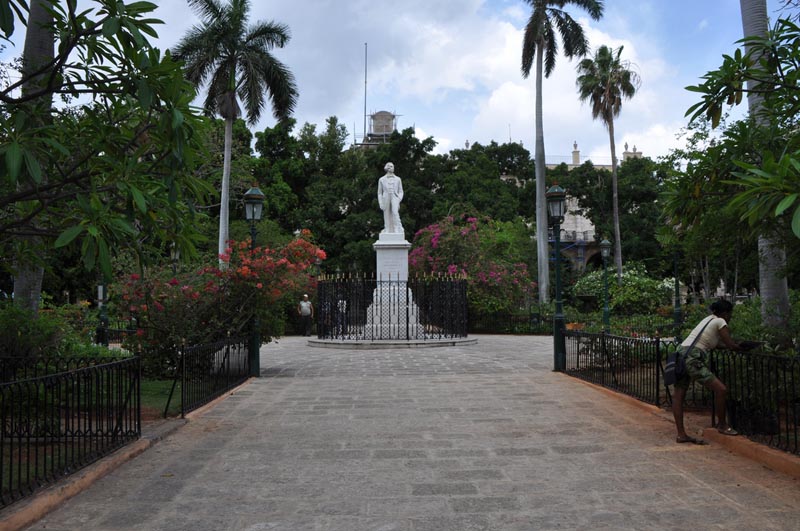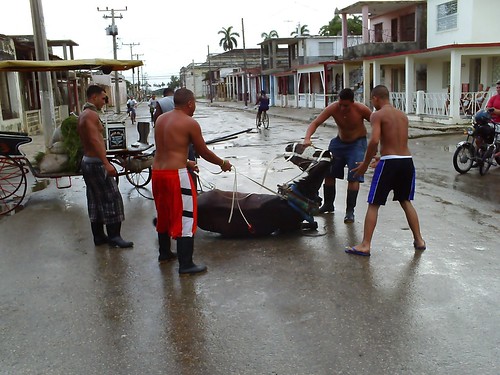Which brings to mind that I never went to New Orleans or the French Caribbean (other than the Hotel Oloffson, an oasis, in Port-au-Prince) until after the 1990 - 2003 Cuban experiences, until now. We lived in NO 2004 - 2005, and have returned there repeatedly every year since, but I'd not been there until 2003, during the year of my last trips to Cuba.
The dream New Orleans city blends seamlessly with the dream Habana Vieja in my dreams. The landscapes outside of these cities in Cuba and Louisiana blend as well. Perhaps this is because of many places in the Cuban sugar regions we visited on this trip, including ruins of 17th, 18th and 19th sugar plantations and mills, shut down sugar plantations and mills and sugar plantations from the 19th century, where we were served foods that the slaves created, had hair styles, clothing and dances demonstrated to us by descendants of the slave labor forces, and in the community created slave era museums. We also visited mills that are in continued sugar production currently, that employ the descendants of the slave labor force of the 19th century, particularly in Matanzas* province.
The two places also blend seamlessly due to NO and Louisiana belonging to Spain in the 18th century, and governed from Havana by the Spanish Military General O'Reilly-- see, particularly,
 |
| Habana Vieja, plaza des armas; a monument honoring Carlos Manuels Céspedes, 19th C Independista. Behind the viewer's perspective is the Cabildo. |
 |
| Csbildo, plaza des arms, Habana Vieja. |
 |
| Cabildo, Jackson Square, New Orleans. |
La plaza des armas in Habana Vieja and Jackson Square in New Orleans (though Jackson Square is a lot smaller, naturally --
 |
| Marshal Alejandro, Conde de O'Reilly (1722, Dublin, Ireland – March 23, 1794, Bonete, Spain) |
Both BL and I kept having New Orleans flashbacks/ For instance, passing by three guys squatting after work hours by a warehouse situated on the Regla train tracks,* *drinking beer. We both thought for a second we were on the street from NO's Quarter on the way to the Bywater. El V, however, sneered at both of us, for he sees Havana and Cuba only as themselves, period, and knows them both far more intimately than I, or even Blake. Nevertheless, Blake and I saw what we saw, and Blake knows NO so very well due to his years as music supervisor for the David Simon HBO series, Treme.
In the meantime BL keeps adding to the Travelers' shared google photo site,
which, if I have it right, is available to anyone with a google and / or gmail account.
-----------------------------
one ruin we visited in Matanzas province, where were taken to see the sacred Ceiba tree (alas, it was too dark by the time I got to the ceiba in Colon, Matanzas, for any photo to have come out), their community effort slavery museum, various templos to seven of the orishas, and given a tremendous performance of both rumba and santería drumming and dance. Then we came back to the primitive, i.e. for the working man, hotel, the only hotel in Matanzas, still, at this time, when the city's just booming!
 |
| The (famous) ferry that connects Regla and Havana muncipios. Can't help it: this reminds me of the New Orleans Canal St. ferry that connects West and East Banks. |
 |
| New Orleans's Canal Street ferry, connecting to Algiers, on the West Bank. |
 |
| Historical Museum of Guanabacoa |


No comments:
Post a Comment